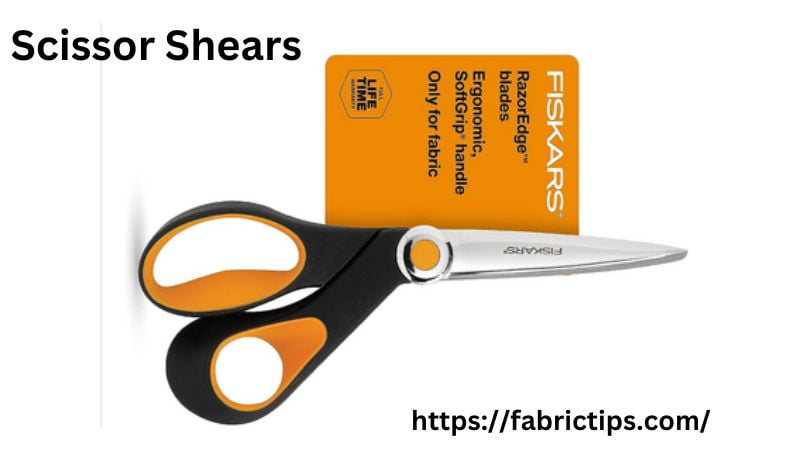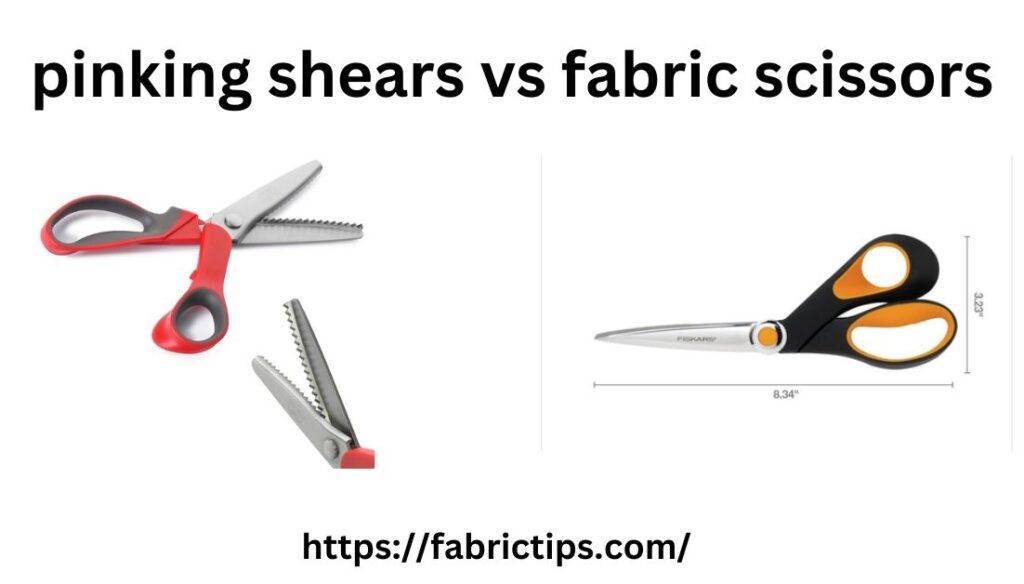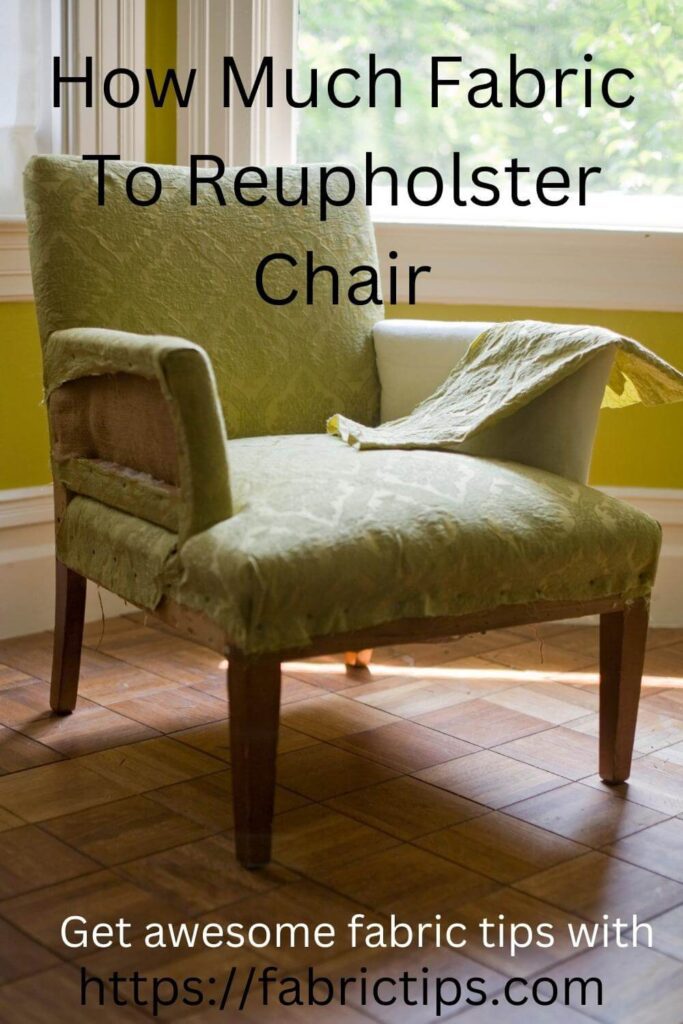Last Updated on December 13, 2025 by Wahid
Sewing involves using scissors & shears to cut fabric, is it important to use one over another? For those who work with fabric, it’s vital to understand what each tool does. It’s hard to discern the difference between fabric scissors and pinking shears, thus how are they different, especially in terms of function?
Pinking Shears Vs Fabric Scissors: How do they differ and who wins? Pinking shears feature jagged edges to create visual appeal, prevent unraveling in loose-woven fabrics, and provide a firm finish. Alternatively, fabric scissors that have straight edges can be designed to cut a variety of materials in different ways. Scissors have equal-sized handles, as well as equal-length blades. There are different sizes and shapes of finger holes in shears, as well as different shapes and sizes of blades.
Additionally, they both diverge in many other ways. How? Let’s take a look below. If you are interested in learning more about fabric scissors vs. pinking shears, keep reading.
Pinking Shears Vs Fabric Scissors: Comparison Chart
When comparing pinking shears and fabric scissors, what are the similarities and differences between them? Comparing fabric scissors and pinking shears is illustrated in the following chart:
| Feature | Pinking Shears | Fabric Scissors |
| Cutting Mechanism: | Zigzag blades that create a sawtooth pattern | Straight blades for clean, precise cuts |
| Purpose: | Designed to prevent fraying of fabric edges | Used for general fabric cutting and trimming |
| Fraying Prevention: | The zigzag edge helps minimize fraying by sealing the fabric edges | Fraying can occur with straight cuts, but can be prevented with additional techniques like serging or using pinking shears |
| Cutting Style: | Produces decorative edges with a zigzag pattern | Creates straight, clean cuts |
| Types of Fabric: | Suitable for lightweight to medium-weight fabrics, especially those prone to fraying like woven cotton or flannel | Versatile for cutting various fabric types, including lightweight, medium-weight, and heavy fabrics |
| Special Uses: | Ideal for sewing projects, appliques, and crafts requiring decorative edges | Suitable for pattern cutting, garment construction, and precise fabric trimming |
| Blade Length: | Typically shorter, ranging from 3 to 9 inches | Varies in length, typically ranging from 6 to 12 inches |
| Ergonomics: | May feature handles with a bent design for comfortable cutting positions | Designed for comfortable and precise cutting, with various handle shapes and sizes available |
| Maintenance: | Regular cleaning and occasional sharpening recommended | Regular cleaning and occasional sharpening recommended |
| Price: | Check on Amazon | Check on Amazon |
In spite of the fact that pinking shears can reduce fraying, they are not a permanent alternative to serging or sewing machines. Additionally, fabric scissors and pinking shears can be used to complete a variety of sewing and crafting projects, depending on personal preference and the desired outcome.
What Are Pinking Shears?

Pinking shears aren’t what you might expect from their name. These scissors have serrated edges instead of 2 solid edges, which are normally found on scissors. However, serrated edges make them look as if they feature sharp teeth.
“Pinking” does not belong to color, but has been used since 1300 to mean “pierce, stab, or create holes in.” Before pinking shears were invented, tailors and seamstresses used pinking irons and punches to create holes.
Our pinking shears of today were not created in their original form. In 1893, Louise Austin refined the original pinking iron design to become the one we use today. It wasn’t until Benjamin Luscalzo patented the design in 1952 that helped actually align the shear blades.
Pinking Shears: What Are Their Uses?
- First of all, why do you need pinking shears? With pinking shears, you can cut zigzag edges on the cloth you’re cutting, usually woven cloth. By limiting the length of frayed thread, the woven cloth’s notorious frayed edges can be minimized.
- Although they are often thought to prevent fraying completely, they aren’t really that effective. A decorative hem design was also achieved with them.
- Prior to pinking shears, the fabric was cut using hard surfaces to get the desired design. The fabric had to be cut with a mallet using a punch.
- Today, pinking shears are just like traditional shears or scissors. In that regard, their design is nothing special. It’s also possible to use them for adding cute edges just as in the past.
- If your fabric is firmer and doesn’t fray easily, you can use pinking shears to finish the edges. Using a needle and thread, stitch 14″ away from the edge of the chosen fabric, and then cut around the edge.
- Finally, sew all the seams together and open those seams.
What Are Fabric Scissors?

A pair of fabric scissors is an essential tool that every tailor, dress maker, seamstress, and embroidery enthusiast should have. Without these fabric scissors, you can do nothing. The invention of fabric scissors is incredibly old. They were originally designed in 400 B.C. in Italy as shears & then enhanced with hand handles in about 600 B.C.
There are different designs & sizes of fabric scissors to meet the needs of different tasks. Fabric scissors can be classified into the following types:
- Ambidextrous Scissors
- Dressmaker Scissors
- Buttonhole Scissors
- Pinking Shears
- Embroidery Scissors
- Tailoring Scissors
The reason there are so many is a good one. There are distinct functions for each of them.
Fabric Scissors: What Are Their Uses?
- Fabric scissors are one of the most useful tools in the trade.
- Since they were designed to cut any, or almost all fabrics varying in materials, thickness, etc.
- If you need anything cut, fabric scissors are your best choice.
- No matter what size scissors you need, there is one that fits comfortably in both hands.
- These scissors make perfect button holes, cut dresses with a long & tapered blade, curved scissors for embroidery hoops, or cut thick fabrics with heavy scissors.
The Different Types Of Scissors & Shears
Scissor Shears

- Scissor shears refer to a variety of cutting instruments.
- Thus, scissors come in a wide range of sizes, designs, and shapes, among them pinking shears.
- Various types of scissor shears are available on the market.
- These include anvil shears, hedge shears, and outdoor pruning shears; they all perform different tasks.
Pinking Shears

- Pinking shears can come in a variety of designs, even though their functions are similar.
- Additionally, pinking shears are specifically designed for cutting fabric edges and patterned fabrics.
- Overall, it is evident there are many kinds of scissor shears, & pinking shears are among them.
Several Common Characteristics Of Pinking Shears And Fabric Scissors
Blades
Scissor shears and pinking shears both have blades. There is only one difference between pinking shears and regular shears: pinking shears have serrated blades and are shaped like saws.
Regardless of which cutting equipment is used, the blades are durable enough to withstand a great deal of pressure. In addition, the blades of both equipment are elongated to ensure excellent performance. Generally, blades are attached to shears of all types.
Pivotal Point
There is a pivotal point on scissors and pinking shears that facilitates adequate mobility.
Both tools have pivotal points formed by blades that bypass each other. Occasionally, both pivot points might need lubrication so cutting is easier.
Handles
In spite of the difference in handles between pinking shears and scissor shears, each type of equipment has a handle designed for a specific purpose.
Typically, the hole in one handle is larger than the hole in the other. During operation, the thumb fits into the smaller hole. Other fingers can be accommodated in the larger hole.
Maintenance
- Pinking shears require more care than fabric scissors. Pinking shears should always be stored properly and lubricated frequently to avoid friction and maximize traction.
- By doing so, fabric of different types will be easy to cut through. Also, pinking shears are generally not multipurpose tools.
- Ideally, you should not operate them for cutting paper or anything else other than as the manufacturer instructs.
- Read & understand the instructions provided by your manufacturer. Your pinking shears will be taken care of in this way.
- Maintaining your scissor shears regularly will also ensure their longevity. You can use scissor shears for a variety of tasks.
- To maintain the perfect shape of the 2 cutting tools, ensure the blades are sharpened.
- Also, avoid long-term exposure to chemicals with abrasives and moisture. By doing so, the blades will become blunt.
Which Is Better: Pinking Shears Or Fabric Scissors?

Fabric scissors and fabric shears have been called both before, so it’s understandable that they are confused. As a serious sewer, you will definitely need sewing scissors and shears. They’ll both come in handy plenty of times.
“Scissors” differ from “shears” in terms of length and handle design. In contrast, scissors are shorter than 10″ and have 2 identical handles, whereas shears have one rounded tip for the thumb and an elliptical tip for 2 to 4 fingers.
As can be seen, pinking shears serve a limited purpose, can’t replace other fabrics scissors, & are updated in design. Generally, home sewers prefer shears with bent handles of 10”, whereas professional dressmakers and tailors prefer heavier 12″ pairs.
When it comes to choosing shears, the answer depends on your hand size. It is more difficult to use tailors shears if your hand is small – particularly when you are working with delicate fabrics. The fabric scissors serve a multitude of purposes, are extremely old, and could be used in the same way as pinking shears if you have patience.
In Short,
Despite pinking shears being a fabric scissors type, they perform specific functions whereas fabric scissors in general perform numerous tasks. Finally, each is useful in its own way.
FAQs
01. How do pinking shears & fabric scissors differ?
Answer: Pinking shears have razor-like blades that are used to sew and cut fabrics – the blade zigzags saw-tooth-style. The blades of tailor’s shears are heavy so they can cut thick fabrics; normal sewing scissors have straight blades.
02. Can pinking shears be sharpened? How?
Answer: Yes, it is possible to sharpen pinking shears, however, only a professional should do so. Specialized equipment will be used to sharpen every tooth, as well as professional knowledge of which angle to use (angles differ between brands). Avoid filing the teeth in-between the blades by yourself. Shears can be sharpened by mail with a mail-in service.
03. Why are my pinking shears so stiff?
Answer: Generally, Pinking shears can require quite a bit of force to cut. When your shears become dull, they would likely need sharpening. Cleaning and lubrication are also good options. Especially if your scissors are brand new, their teeth may not be aligned properly because they are budget scissors.
Most pinking shears are slower and require a bit more force compared to regular dressmaking shears ( straight-cutting scissors). Due to the zig-zag shape and tight space between the 2 blades, the blades must pass through a complex and narrow pattern to cut.
04. What are pinking shears not used for?
Answer: They aren’t used on knits with stretch because they don’t fray, so the edges don’t need to be finished. Knit fabrics can also be snagged and run by pinking shears.
To cut out pattern pieces, you should not use pinking shears. Pattern pieces must be cut accurately with straight cuts, not zigzags. If you use pinking shears, you could cut zig zags, which could affect your sewing allowance requirements. Additionally, matching and sewing pattern pieces would be more difficult.
05. Why are fabric scissors different?
Answer: There is a steeper angle on the blade of fabric scissors. Stainless steel is the most common material for scissors, while fabric scissors are usually made of carbon steel, which lasts longer & sharpens more easily.
Conclusion
According to this article, you know in-depth about Pinking Shears Vs Fabric Scissors. Basically, both pinking shears and fabric scissors are reliable cutting tools.
However, pinking shears are limited in their capabilities compared to fabric scissors. Hence, Pinking shears are primarily used to cut fabric, whereas scissor shears can be used for a variety of purposes.
Using a fabric scissor, you can cut paper & prune garden shrubs. Choosing the right cutting equipment is often a matter of your needs. Nevertheless, keep in mind that you must maintain both kinds of equipment to ensure their long-term durability.


